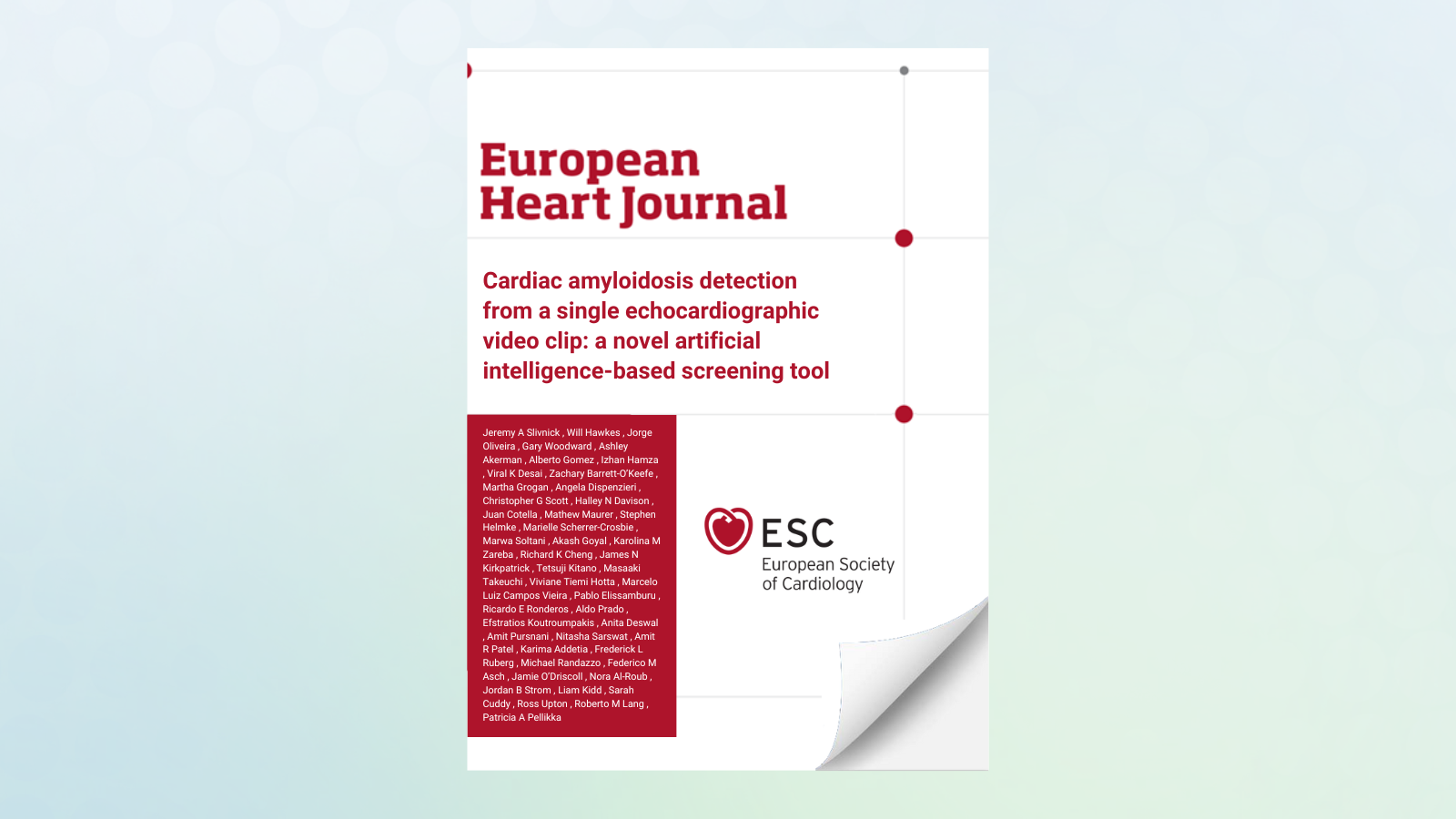
Cardiac amyloidosis detection from a single echocardiographic video clip: a novel artificial intelligence-based screening tool
- | By Ultromics
Jeremy A Slivnick , Will Hawkes , Jorge Oliveira , Gary Woodward , Ashley Akerman , Alberto Gomez , Izhan Hamza , Viral K Desai , Zachary Barrett-O’Keefe , Martha Grogan , Angela Dispenzieri , Christopher G Scott , Halley N Davison , Juan Cotella , Mathew Maurer , Stephen Helmke , Marielle Scherrer-Crosbie , Marwa Soltani , Akash Goyal , Karolina M Zareba , Richard K Cheng , James N Kirkpatrick , Tetsuji Kitano , Masaaki Takeuchi , Viviane Tiemi Hotta , Marcelo Luiz Campos Vieira , Pablo Elissamburu , Ricardo E Ronderos , Aldo Prado , Efstratios Koutroumpakis , Anita Deswal , Amit Pursnani , Nitasha Sarswat , Amit R Patel , Karima Addetia , Frederick L Ruberg , Michael Randazzo , Federico M Asch , Jamie O’Driscoll , Nora Al-Roub , Jordan B Strom , Liam Kidd , Sarah Cuddy , Ross Upton , Roberto M Lang , Patricia A Pellikka
View the full publication here
Accurate differentiation of cardiac amyloidosis (CA) from phenotypic mimics remains challenging using current clinical and echocardiographic techniques. The accuracy of a novel artificial intelligence (AI) screening algorithm for echocardiography-based CA detection was assessed.
Methods
Utilizing a multisite, multiethnic dataset (n = 2612, 52% CA), a convolutional neural network was trained to differentiate CA from phenotypic controls using transthoracic apical four-chamber video clips. External validation was conducted globally across 18 sites including 597 CA cases and 2122 controls. Classification accuracy was assessed on the entire external validation dataset, and subgroup analyses were performed both on technetium pyrophosphate scintigraphy referrals, and individuals matched for age, sex, and wall thickness. Model accuracy was also compared with the transthyretin CA score and the increased wall thickness score within a subset of older heart failure with preserved ejection fraction patients with increased wall thickness.
Results
Cardiac amyloidosis patients and controls displayed similar age, sex, race, and comorbidities. After the removal of uncertain AI predictions (13%), model discrimination and classification were excellent for the entire external validation dataset [area under the receiver operating characteristic curve (AUROC) 0.93, sensitivity 85%, specificity 93%], irrespective of CA subtype (sensitivity: light-chain = 84%, wild-type transthyretin = 85%, and hereditary transthyretin = 86%). Performance was maintained in subgroup analysis in patients clinically referred for technetium pyrophosphate scintigraphy imaging (AUROC 0.86, sensitivity 77%, specificity 86%) and matched patients (AUROC 0.92, sensitivity 84%, specificity 91%). The AI model (AUROC 0.93) also outperformed transthyretin CA score (AUROC 0.73) and increased wall thickness (AUROC 0.80) scores.
Structured Graphical Abstract 
Geographic representation of the separate training, tuning, and international, multi-ethnic external validation cohorts which included patients with cardiac amyloidosis (CA) and controls referred for transthoracic echocardiography. The artificial intelligence model, based on a single apical four-chamber echocardiographic videoclip, was validated in the entire external validation cohort of 2719 patients, in which prevalence of CA was 22%, with AUC 0.93. The model's accuracy was maintained in testing in various subgroups.
Conclusions
This AI screening model—using only an apical four-chamber view—effectively differentiated CA from other causes of increased left ventricular wall thickness.

